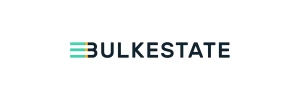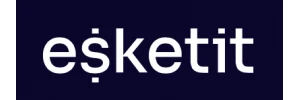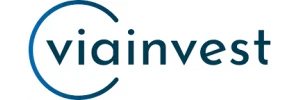LendUp Inc: An Overview of its Digital Lending Journey in the United States
LendUp Inc, originally founded in 2011 by Sasha Orloff and Jake Rosenberg, emerged in the United States as a financial technology company with an ambitious mission: to offer a "socially responsible" alternative to traditional high-cost lenders. Incorporated in Delaware and headquartered in Oakland, California, LendUp positioned itself to serve the vast population of underbanked Americans who often found themselves excluded from conventional credit markets due to poor or non-existent credit histories.
The company's core business model revolved around a concept known as the "LendUp Ladder." This innovative approach aimed to help borrowers improve their financial health by rewarding responsible repayment behavior and engagement with financial education courses. As borrowers consistently paid their loans on time and completed educational modules, they could theoretically gain access to larger loan amounts at progressively lower interest rates, thereby climbing the "ladder" towards more affordable credit and better financial standing. LendUp successfully attracted significant investment, raising over $325 million from prominent investors including PayPal, Google Ventures, and Andreessen Horowitz, among others.
Despite its initial promise and substantial funding, LendUp's journey as a direct lender concluded in mid-2021. The cessation of its loan origination activities followed a series of significant regulatory enforcement actions by both federal and state authorities, which highlighted critical issues in its past lending practices and consumer disclosures. While its direct lending operations have ceased, there are unverified reports suggesting its loan operations were spun off into Mission Lane under new ownership in 2022, and that LendUp itself may have shifted its focus to a loan-matching marketplace.
Understanding LendUp's Financial Products, Rates, and Terms
During its active years, LendUp Inc historically offered a range of financial products tailored to its target demographic. These included single-payment payday loans, multi-payment installment loans, and credit cards issued in partnership with Beneficial State Bank. The loan amounts and terms varied significantly depending on the product type and state regulations.
For payday loans, which are short-term, high-cost loans, LendUp typically offered amounts ranging from $100 to $1,000. These loans were designed for quick repayment, with terms generally spanning 7 to 31 days. The Annual Percentage Rates (APRs) associated with these loans were notably high, often falling between 300% and 700%. For instance, a 15-day loan of $200 might incur a $33 fee, translating to an APR of approximately 391%. Such rates are characteristic of the high-risk, short-term lending market.
Installment loans provided a more extended repayment structure, with amounts from $300 to $5,000, repayable over 3 to 12 months. The APRs for installment loans were lower than payday loans but still substantial, generally ranging from 100% to 200%, with exact figures depending on the loan term and specific state laws. In addition to interest, borrowers faced various fees. Historically, LendUp charged origination or expedited fees, often 5% to 10% of the principal, which were sometimes undisclosed as finance charges. These practices later became a point of contention in regulatory actions. Other common fees included late payment charges of up to $25 per occurrence and returned payment fees of up to $30.
LendUp also facilitated access to credit cards in partnership with Beneficial State Bank, with credit limits typically between $300 and $1,000. These cards carried high APRs, reportedly between 35% and 79%, reflecting their target market of consumers with poor credit. All loans offered by LendUp were unsecured, meaning no collateral was required. Credit decisions were based on proprietary underwriting algorithms that utilized public data, income verification, and a borrower's repayment history, often factoring in their progress on the "LendUp Ladder."
The Application Process and User Experience: Navigating LendUp's Digital Platform
LendUp's application process was designed to be entirely digital and user-friendly, catering to the modern consumer in the United States. Prospective borrowers primarily accessed services through the company's web portal, lendup.com, which was also mobile-optimized for easy use on smartphones. Unlike traditional lenders, LendUp operated without any physical branch locations, relying solely on its online presence to reach customers nationwide.
The onboarding and Know Your Customer (KYC) procedures were streamlined for efficiency. Applicants were typically required to provide identity verification through their Social Security Number and a driver’s license. Income verification was also a crucial step, often completed by submitting bank statements or payroll documentation. This automated onboarding process allowed many applicants to complete their applications within minutes, reflecting the speed and convenience that digital lenders promise.
LendUp employed a proprietary credit scoring and underwriting algorithm, which integrated traditional credit history with employment data and its unique "LendUp Ladder" metrics. This system was intended to provide a more holistic view of an applicant's creditworthiness, particularly for those with thin or poor credit files. While most decisions were automated, borderline applicants might undergo a manual review process. Once approved, loan disbursements were primarily made via ACH bank transfer, often reaching the borrower's account on the same or next business day. In select states, cash disbursements were also available through checks or reloadable prepaid cards.
Regarding user experience, while LendUp maintained an active website and social media presence, it is important to note that by 2025, there were no dedicated native iOS or Android mobile applications listed in major app stores. This meant the primary mobile interaction was through its mobile-optimized website. Customer support was available via email and phone during standard business hours (Monday to Friday, 9 AM to 5 PM PT), but in-person support was not an option. For collections, LendUp utilized automated reminders and engaged third-party collections agencies after 30 days of delinquency, a practice that ceased after 2021 enforcement actions.
Regulatory Scrutiny and Market Standing: A Look at LendUp's Position and Competitors
LendUp Inc operated within a complex and highly regulated financial landscape in the United States, subject to state-specific payday and installment lending laws, as well as oversight from federal bodies like the Consumer Financial Protection Bureau (CFPB). Its history is marked by significant regulatory challenges that ultimately led to the cessation of its direct lending operations.
The company faced multiple enforcement actions. In 2016, the California Department of Business Oversight levied a $2.7 million settlement against LendUp for 385,050 violations of state payday and installment loan laws. Concurrently, the CFPB issued a consent order, imposing a $6.3 million refund and penalty for deceptive marketing practices related to its "LendUp Ladder" and undisclosed fees. Further issues arose in 2020 when the CFPB sued LendUp for Military Lending Act (MLA) violations, resulting in a $950,000 penalty and $300,000 in consumer redress. The most impactful action came in 2021, with a CFPB lawsuit and final order that included a $100,000 penalty, $40.5 million in suspended consumer redress, and crucially, an injunction prohibiting LendUp from originating new loans or collecting on existing debt. These actions underscored critical failures in compliance and consumer protection, despite LendUp's stated mission.
In terms of market position, LendUp sought to differentiate itself in a crowded competitive landscape. Its primary competitors in the payday lending space included companies like CashNetUSA and Speedy Cash, while installment lenders such as Avant and OppLoans represented another segment. Emerging neobanks and credit-builder apps like Chime and Upgrade also offered alternative solutions for underbanked consumers. LendUp's unique selling propositions were its "LendUp Ladder" gamification for credit building and its provision of free financial education content, with over 2 million courses reportedly completed by users. However, these differentiators were overshadowed by the regulatory penalties and customer complaints.
Customer reviews for LendUp, particularly on platforms like Trustpilot, generally reflected a low rating (e.g., 2.0/5), with common complaints citing high interest rates and issues related to debt chaining, even post-regulatory changes. Despite an A+ accreditation from the Better Business Bureau, numerous customer complaints regarding collections practices were also noted. These experiences often contrasted with the company's stated goal of improving financial health.
Key Considerations for Borrowers in the United States
Given LendUp Inc's history and its current status of having ceased direct loan origination in 2021, potential borrowers in the United States should approach high-cost, short-term lending options with extreme caution. While LendUp itself is no longer issuing loans, the lessons learned from its operational challenges and regulatory issues are highly relevant for anyone considering similar financial products from other providers.
Firstly, the historically high Annual Percentage Rates (APRs) associated with LendUp's payday and installment loans—ranging from 100% to 700%—serve as a stark reminder of the significant cost of borrowing from such lenders. These rates can quickly lead to a cycle of debt, where the borrower struggles to repay the principal along with substantial interest and fees. It is imperative for consumers to fully understand the total cost of a loan, including all fees, before committing. Always calculate the true repayment amount and assess its affordability within your budget.
Secondly, the regulatory actions against LendUp highlight the importance of transparent disclosures. Borrowers must actively seek clear and comprehensive information regarding all loan terms, interest rates, and potential fees. Be wary of any lender that seems to obscure these details or uses confusing language. The "LendUp Ladder" concept, while seemingly beneficial, faced scrutiny for deceptive marketing, emphasizing that promises of credit improvement should be thoroughly vetted and understood.
For individuals with poor or no credit, exploring alternatives to high-cost loans is crucial. Options may include credit-builder loans from local credit unions, secured credit cards, small personal loans from traditional banks (if eligible), or seeking assistance from non-profit credit counseling services. Emergency funds, even small ones, can prevent reliance on predatory loans for unexpected expenses. If a loan is absolutely necessary, compare offers from multiple reputable lenders, focusing on those with transparent terms and lower APRs, even if your credit score is challenged. Always check a lender's licensing and regulatory compliance in your state.
Finally, while LendUp's historical aim was to provide a path to better financial health, its journey underscores the inherent risks and complexities in the high-cost lending sector. Consumers should prioritize building an emergency savings fund, improving credit through responsible financial habits, and utilizing free financial literacy resources. If LendUp indeed operates as a loan-matching service today, borrowers must remember that LendUp itself is not the lender, and they should meticulously vet any third-party lenders it connects them with, applying the same diligence and caution.








